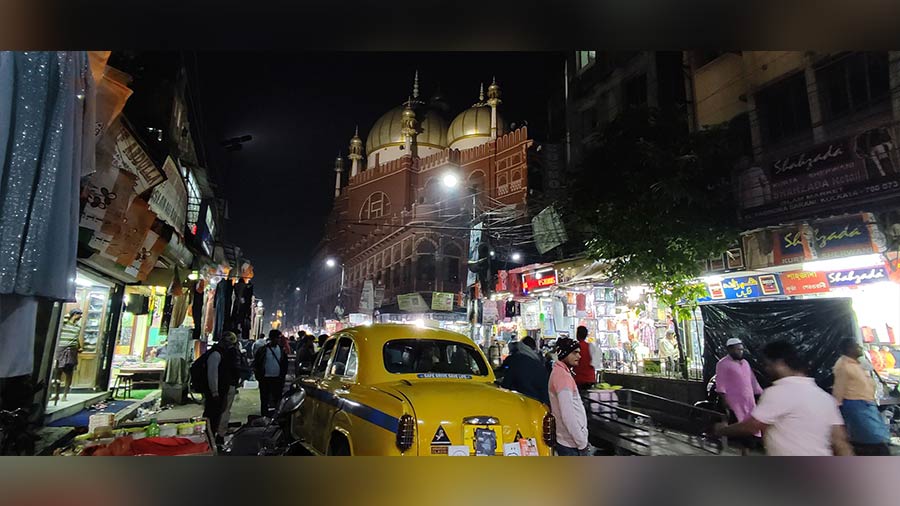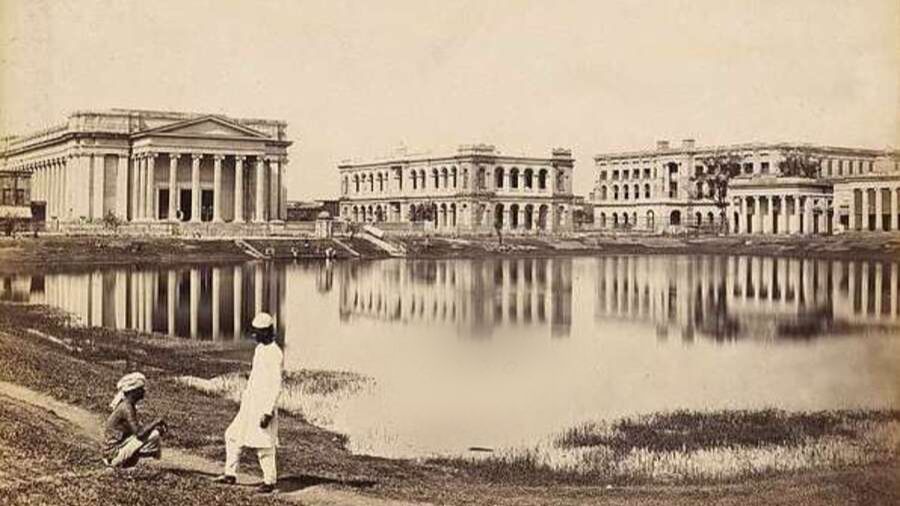When we talk about the built heritage of Kolkata, the discussion is usually limited to mansions, and sometimes, memorials. Rarely do we talk about roads of Kolkata, which are just as old and form the basic infrastructure of the city. If we talk about the oldest road of Kolkata, it is the well-known Rabindra Sarani, earlier known as Chitpur Road, which is believed to be almost 400-years old. Chitpur Road is divided into two parts — Lower and Upper. Lower Chitpur Road is comparatively short — starting from Mercantile Building standing at the crossing of B. B. Ganguly Street and Bentinck Street and ending at Mahatma Gandhi Road. Lower Chitpur Road is an ideal stretch for a heritage walking tour on a Sunday. On weekdays, the crowd on this stretch makes it very difficult to walk leisurely. However, one can always try a tram ride on this route on a weekday — it presents the neighbourhood like a movie show.
Origin of the name
The origin of the name ‘Chitpur’ is popularly believed to have been derived from a Chitteswari temple built in 1610. According to another source, the area was earlier named Chitrapur. It is referred to in Bipradas Pipilai’s 1495 poem Manasamangal, but it could be a later interpolation. According to it, Chitpur was home to Chakrapani, commander-in-chief of the Nawab of Bengal’s army, and had a flourishing colony of artists.
The Mercantile Building at the beginning of the road houses many age-old offices with old-fashioned, but functioning lifts. Some of them have their establishments even on the mezzanine floors. The mansion was built in the early 1900s by Haricharan Goho, a renowned businessman who hailed from the famous family of wrestlers in Bengal.
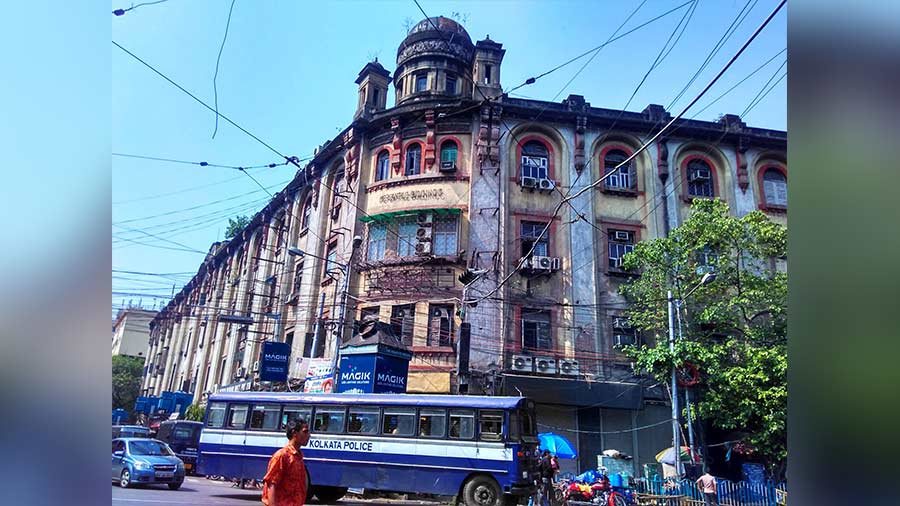
The Mercantile Building houses many age-old offices Amitabha Gupta
Opposite the Mercantile Building is Lalbazar Police Headquarters. There are many theories behind the name ‘Lalbazar’, associating it with the colour red. In old records, the name is mentioned as ‘Loll bazaar’, and the place had lots of taverns once, where ‘Loll Shraub’ (red wine) was served. As per J. Z. Hollowell, the place was never a bazaar, but a locality. Author Ranabir Roy Chowdhury mentions that soldiers and sailors usually referred to the street in front of it as ‘Flag Street’, because of the “string of flags across the street leading to eating houses, grog shops and brothels”. The modern police office was the residence of John Palmer, one of the merchant princes of Calcutta. The house next to it was the Harmonica Tavern, one of the grand houses of the area.
Walking down Lower Chitpur Road, keeping the police headquarters to the left, on the right one can observe many old mansions with the old street name still prominently displayed. There is a narrow lane on the right named Chhatawala Gali, which had a notorious reputation when Chinese opium ganglords ruled this area. The street finds mention in Bengal’s revolutionary movement, as the place where the Rodda Arms Heist of 1914 was planned.

Many old mansions still prominently display the old street name Amitabha Gupta
A left turn from Lower Chitpur Road, near Harinbari Lane, takes the heritage enthusiast to another busy lane with shops selling wooden ladders – Parsee Church Street (more on that later).
This leads to Ezra Street, which houses the busy market of Tiretta Bazaar. The market is named after Edward Tiretta, an Italian who had fled his own country for a political offence. He drifted to Calcutta, where for many years he held the post of civil architect. The market once occupied nine bighas and eight cottahs of land.
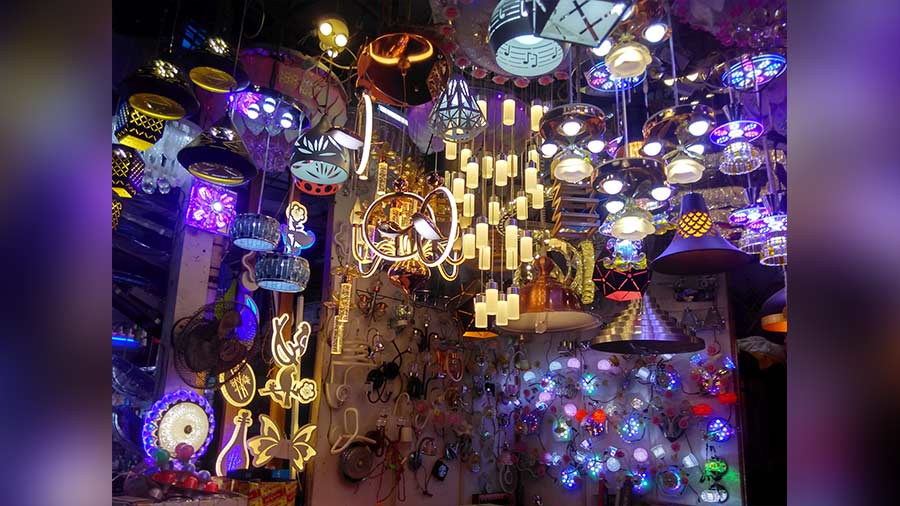
Tiretta Bazar houses many lampshade and electrical goods shops Amitabha Gupta
Ezra Street, on which the market stands, is named after David Joseph Ezra — the famous Jewish merchant and community leader of the Baghdadi Jewish community of Calcutta — who had his offices at 59-62 Ezra Street. Ezra is credited with building many celebrated Victorian buildings and synagogues of the city.
Parsee Church Street got its name from a Parsi Fire Temple inside the market, which is no longer functional. The Rustomjee Cowasjee Banajee fire temple was built in 1839 and is surrounded by ugly structures. Despite being a Grade I heritage structure, nothing has been done by the state’s Heritage Commission or any other body to save Calcutta's first Parsi fire temple. Only a plaque by the tourism department is there. With its last trustee dead, the future of the heritage structure looks bleak.

Only an old signage reveals the location of the Rustomjee Cowasjee Banajee fire temple (left) — a Grade I heritage structure Amitabha Gupta
Walking down the lane, besides a water tap, stands another plaque. It is about Gerasim Lebedev, a Russian and Indologist, who first presented Bengali dramas in 1795 in Lebedev Theatre. The house opposite the plaque is 37, Ezra Street, where Lebedev's theatre used to stand.
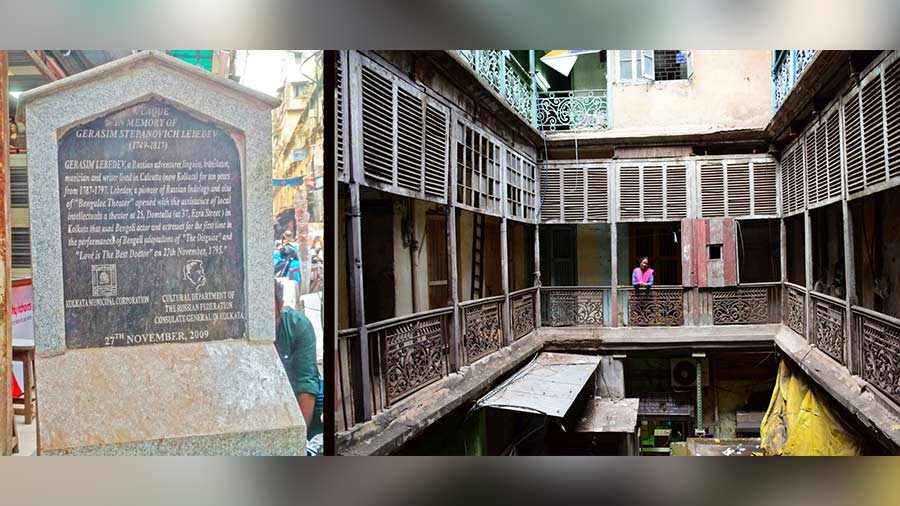
(Right) 37, Ezra Street, where Gerasim Lebedev’s theatre stood; (left) a plaque erected opposite the house Aritra Biswas
Back on Chitpur Road, one can take a look at the Golkothi Imambara. Built in 1852, it is the main markaz (centre) of Azadari in Kolkata. This monument holds the Shia-Muslim Majlis during the month of Muharram, to mourn over the martyrdom of Imam Hussain. This round building has a unique wooden staircase.
Lower Chitpur Road also has some sweet shops, where one can taste local sweets like Muscoth Halua and Mewa Laddu.

Shops sell unique sweets like Muscoth Halua and Mewa Laddu Amitabha Gupta
After tasting the sweets, it is time to enter the huge Nakhoda Masjid, barefoot and head covered.
The foundation stone of the mosque was laid in 1926, which technically does not make it a heritage building as it hasn’t yet crossed 100 years. The mosque was named Nakhoda, which means ‘mariner’, and was built by Kutchi Memon Jamat, a small community of Sunni Muslims from Kutch. The mosque was built as an imitation of the mausoleum of Mughal Emperor Akbar at Sikandra. The total cost incurred for the construction was 15,00,000 rupees.

Inside the mosque Amitabha Gupta
Close to the mosque is the Sahaleez Musafirkhana – an age-old dharamshala with interesting architecture. Nearby is also the Salim Manzil, where legendary singer Gauhar Jaan stayed for some time.
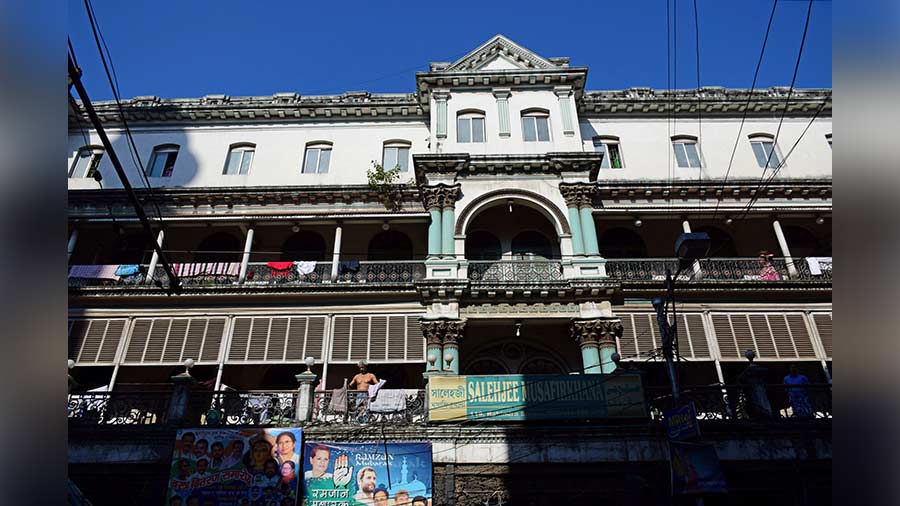
The Sahaleez Musafirkhana has interesting architecture Amitabha Gupta
If one is hungry for more built heritage, one can cross Mahatma Gandhi Road and take a look at the Panchayati Jain Temple, which was once the house of Manilal Mallick, who formed the Sinduriapatty Brahmo Samaj there. Ramkrishna Paramahansa visited this house regularly. Descendants of Manilal Mallick sold it to members of the Jain community, who later constructed this temple.
